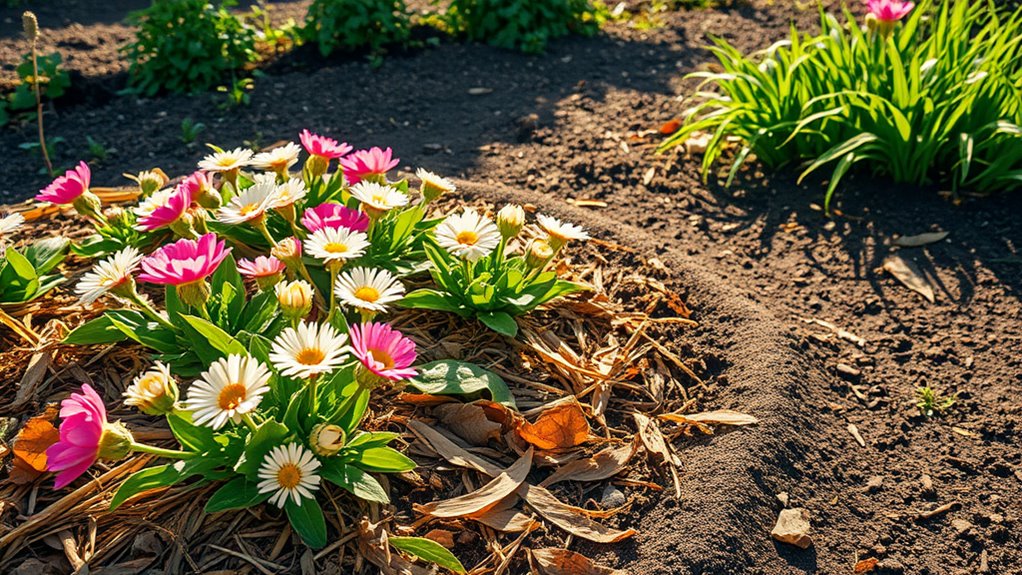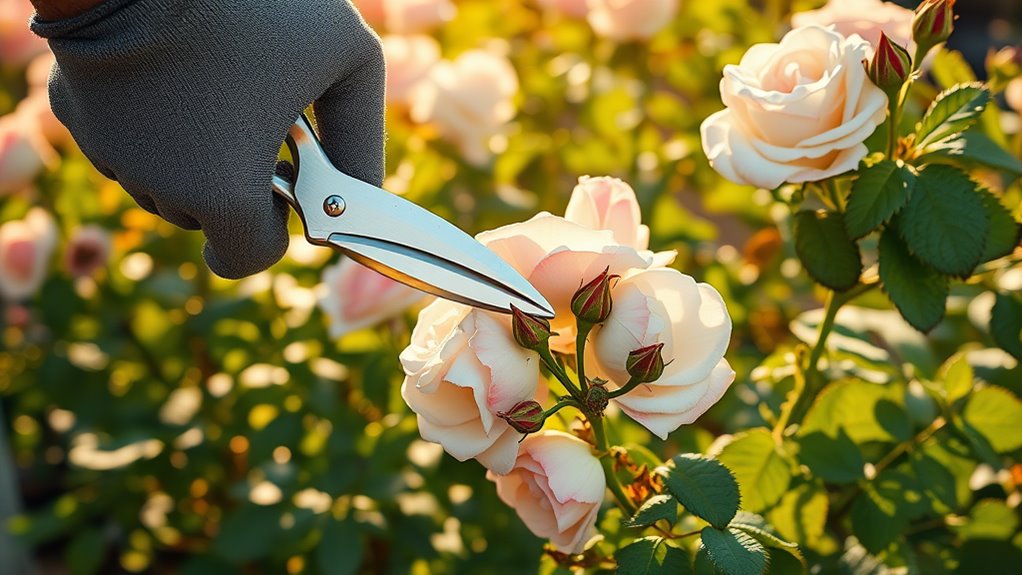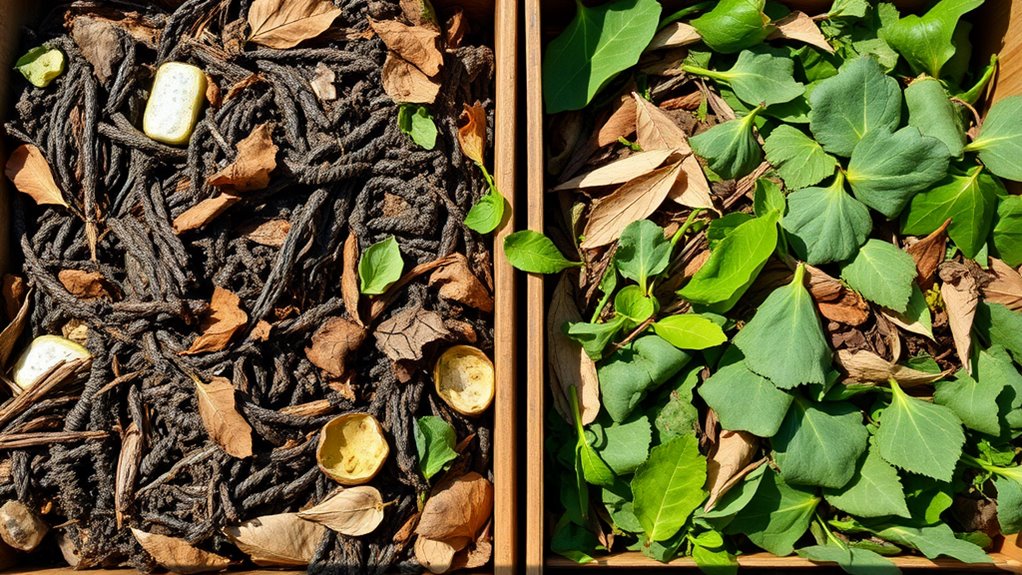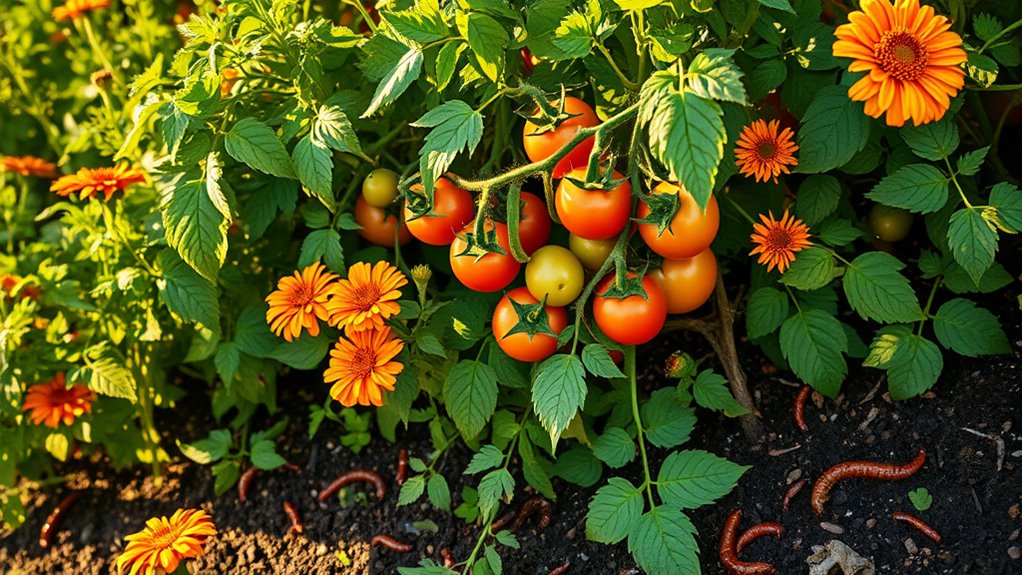Why You Should Stop Pulling Weeds – Try This Instead!
You’ve likely been pulling weeds, but it’s disruptive to your soil’s ecosystem, harming beneficial microbes and leading to quick regrowth while ignoring broader threats. Instead, try eco-friendly options like mulching to block sunlight, retain moisture, and enhance biodiversity for a healthier garden. These methods promote long-term weed prevention and soil vitality. Keep exploring these strategies for even more effective, sustainable results.
Key Takeaways
- Pulling weeds disrupts soil structure and harms beneficial microbes, leading to erosion and reduced garden health.
- Use organic mulching to block sunlight, suppress weed growth, and retain soil moisture for a more sustainable approach.
- Optimize soil health with compost to discourage invasive weeds and foster beneficial plant competition.
- Implement crop rotation to disrupt weed life cycles and prevent nutrient depletion in the soil.
- Introduce cover crops to naturally outcompete weeds, enhancing biodiversity and promoting a balanced garden ecosystem.
The Drawbacks of Traditional Weeding
While traditional weeding involves manually pulling or hoeing weeds, it’s often more trouble than it’s worth. You expend significant time and energy, yet weeds rebound rapidly from root fragments or seeds in the soil, making control ineffective. Additionally, this approach neglects broader garden threats like pests, which can be addressed through natural pest control to foster a healthier environment.
This disrupts soil structure, harming beneficial microbes and increasing erosion, which compromises garden health. As key weed control tips highlight, traditional methods promote physical strain and inefficiency, failing to prevent future invasions.
Scientifically, they disturb ecosystems without addressing underlying factors, leaving you in a repetitive cycle of labor-intensive maintenance.
To break this cycle, consider exploring eco-friendly alternatives that provide more effective and sustainable weed control strategies for a thriving garden.
Benefits of Eco-Friendly Alternatives
Instead of relying on traditional weeding’s drawbacks, you’ll find eco-friendly alternatives deliver smarter, sustainable results. These options minimize environmental harm, boost soil vitality, and foster natural ecosystems without chemicals. You’ll enhance biodiversity and long-term garden health through methods like mulching. Mulching not only controls weeds but also promotes moisture retention for improved soil health and pest control. Additionally, adopting Fall Mulching techniques can help prepare your garden for winter by improving soil health and shielding plants from cold weather.
| Benefit Aspect | Traditional Weeding Impact | Eco-Friendly Gains |
|---|---|---|
| Environmental Footprint | Causes soil erosion | Reduces carbon emissions |
| Soil Quality | Disrupts microbial life | Enhances nutrient retention |
| Overall Efficacy | Offers temporary relief | Promotes enduring balance |
Effective Strategies for Weed Prevention
Preventing weeds effectively requires practical strategies that harness natural processes, such as mulching and soil optimization, to create barriers and promote healthy plant growth.
You can start by applying a thick layer of organic mulch, which blocks sunlight and inhibits weed seed germination. This mulching method also helps keep the soil consistently moist, enhancing overall garden vitality.
Optimize your soil’s pH and nutrient levels through targeted testing and amendments; this makes it less inviting for invasive species while boosting your desired plants’ vigor.
Regularly rotate crops to disrupt weed cycles, and introduce cover crops that outcompete weeds naturally.
These methods reduce reliance on chemicals, fostering a balanced ecosystem you control actively.
Additionally, incorporating mulching techniques can transform your garden’s growth and size by enhancing plant health through the benefits of different mulch types.
How Mulching Supports Garden Health
Mulching boosts your garden’s health by conserving soil moisture and moderating temperatures, creating an ideal environment for plant growth.
It enhances soil structure, allowing roots to penetrate deeply and access nutrients more effectively. You’ll reduce erosion as mulch forms a protective barrier, preventing nutrient loss during heavy rains.
Scientifically, organic mulches like bark or compost foster beneficial microbial activity, breaking down materials to release essential minerals. Additionally, incorporating ingredient swaps in your composting process can lead to richer soil that further enhances mulch effectiveness.
By maintaining a stable pH and promoting earthworm populations, you build resilient soil that supports vibrant, disease-resistant plants.
This practical approach sustains long-term garden vitality.
Moreover, you can enhance your soil naturally using backyard solutions like readily available materials from your own backyard.
Natural Techniques for Weed Control
While weeds can quickly overrun your garden, natural techniques offer effective, chemical-free solutions to keep them in check. Additionally, to enhance your garden’s overall health, consider using easily accessible staples for managing other common threats.
To implement solarization, cover soil with clear plastic during hot months, trapping heat to kill weed seeds up to six inches deep through thermal sterilization.
You can apply diluted vinegar as a contact herbicide, where its acetic acid disrupts weed cell membranes for rapid wilting.
For mechanical control, use a sharp hoe to slice weeds at the root, minimizing regrowth.
Regularly monitor your garden, combining these methods for sustained, eco-friendly weed suppression without synthetic chemicals.
For a more comprehensive garden strategy, consider natural pest control methods to address additional threats beyond weeds.
Integrating Cover Crops in Your Garden
Cover crops play a key role in maintaining a healthy garden, as they naturally suppress weeds while improving soil structure. Embracing cover crops was a pivotal step in my garden transformation from chemical-based to organic methods. You’ll enhance soil fertility and prevent erosion by planting options like clover or rye in off-seasons. Choose based on your climate and soil type for optimal results. Actively integrate them by sowing after harvest and tilling them in before planting.
| Cover Crop | Benefits | Integration Tips |
|---|---|---|
| Clover | Fixes nitrogen, attracts pollinators | Sow in fall; mow before flowering |
| Rye | Prevents erosion, adds organic matter | Plant in late summer; till in spring |
| Buckwheat | Smothers weeds quickly | Broadcast seeds in warm soil; cut at bloom |
| Vetch | Enriches soil with nitrogen | Mix with grains; incorporate before maturity |
| Alfalfa | Builds deep roots for aeration | Use in rotations; harvest as needed |
This method boosts your garden’s resilience scientifically. Incorporating cover crops supports sustainable practices by enhancing natural soil fertility through methods like those in eco-friendly gardening. (99 words)
Long-Term Tips for a Weed-Resistant Landscape
To create a weed-resistant landscape that thrives over time, you’ll focus on strategic plant choices and soil management, drawing from ecological principles to minimize weed invasions.
Select native, dense-growing species that outcompete weeds through rapid establishment and root competition.
Enhance soil health by incorporating compost, which fosters beneficial microbes and improves structure, reducing bare spots.
Apply organic mulches like bark or leaves to block sunlight and suppress germination.
Regularly rotate plants and monitor biodiversity, ensuring a balanced ecosystem that naturally curbs invasive growth while promoting sustainability.





